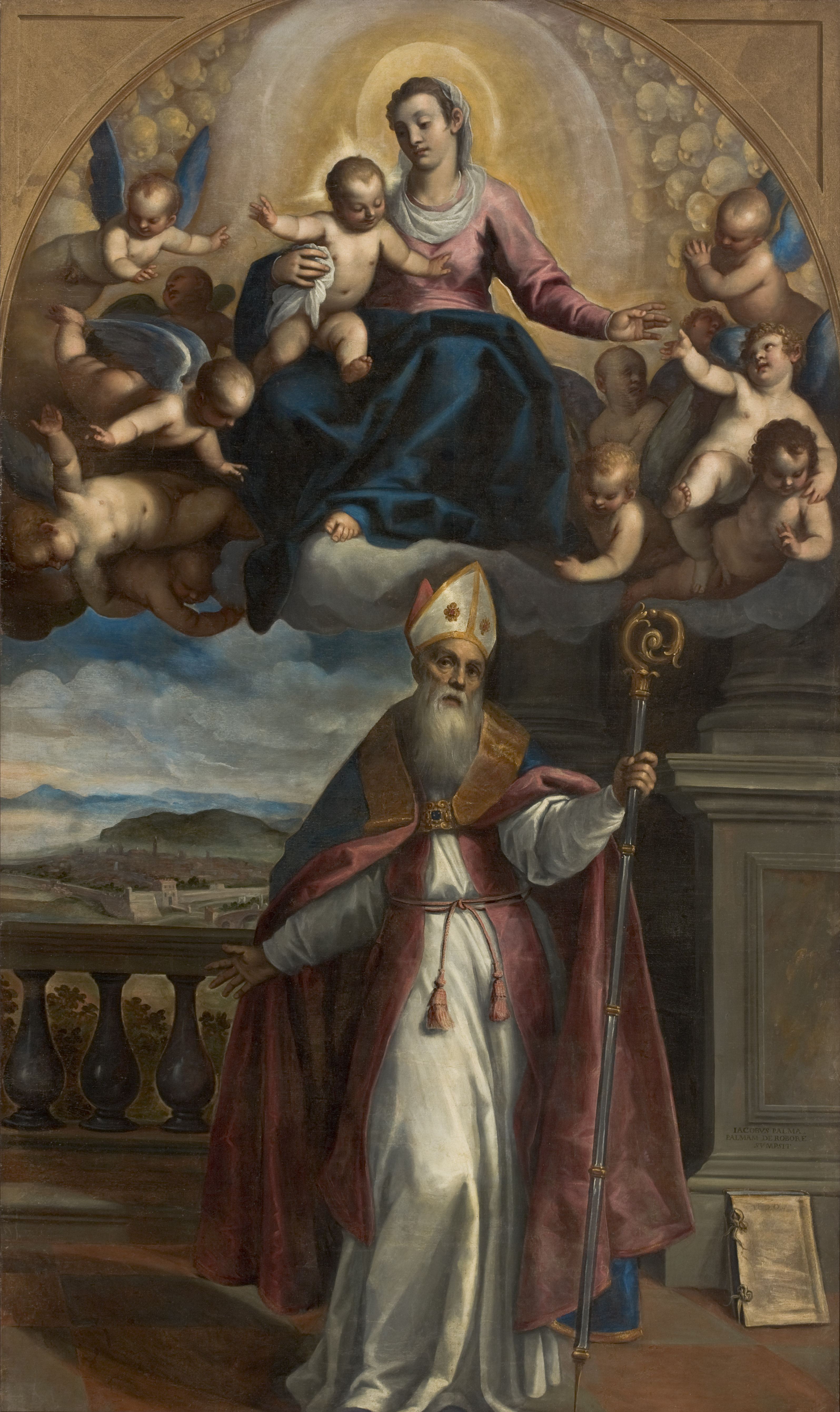Jacopo Palma, o Jovem
Apparition of the Virgin with the Child to St. Ubaldo, Bishop of Gubbio, Who Points Out to the City of Pesaro in the Background, 1620
Author:
Jacopo Palma, o JovemBio:
Veneza, Itália, 1548-Veneza, Itália ,1628Title:
Apparition of the Virgin with the Child to St. Ubaldo, Bishop of Gubbio, Who Points Out to the City of Pesaro in the BackgroundDate:
1620Medium:
Óleo sobre telaDimensions:
352 x 209,5 x 42 cmCredit line:
Doação Lina Bo Bardi e Pietro Maria Bardi, 1947Object type:
PinturaInventory number:
MASP.00025Photography credits:
João Musa
This is the idealized portrait – Apparition of the Virgin with the Child to St. Ubaldo, Bishop of Gubbio, Who Points out to the City of Pesaro in the Background – of Ubaldo Ballassini, who was born in Gubbio around 1080-1085, died there in 1160 and was canonized in 1192. He is mentioned by Dante in Paradise XI, 44, in St. Thomas Aquinas’s enthusiastic eulogy of St. Francis of Assisi: “Intra Tupino e l’acqua che discende / Del colle eletto dal beato Ubaldo” (Between the waters of the Tupino (stream) and the waters which flow from the hill chosen by Blessed Ubaldo). The hill in question, located in the surroundings of Gubbio, was the setting for Ubaldo’s experience as a recluse, which preceded his ascension to the Bishopric of Gubbio. His double vocation as hermit and municipal administrator – Ubaldo showed himself an able peacemaker between rival factions while protecting Gub- bio from the incursions of Barbarossa – was confirmed by the historian Uberto Benvoglienti (1688-1733), who stated that “Beatus Ubaldo primo fuit eremita in monte illo, deinde fuit episcopus Eugubii. Et est patronus illius civitatis”. As dean of the Cathedral, Ubaldo convinced the clergy to embrace the rigid rule of Pietro degli Onesti, which had originated in Ravena.
After identifying the town depicted in the background of the painting as Pesaro, Zampetti (1978) reestablished the exact circumstances under which Palma was commissioned to do the painting. The construction of St. Ubaldo’s Church, which is the provenance of the Masp’s painting, was started in 1610 on the ini- tiative of Pesaro’s community in order to celebrate the birth of the latest Duke Della Rovere. The Duke was born in 1605 and was baptized as Federico Ubaldo in special honor to both his glorious ancestor, Federico da Montefeltro, and Saint Ubaldo, on whose feast day the heir had been born. On February 20, 1619, cardi- nal Bevilacqua wrote from Rome to Duke Francesco Maria Della Rovere requesting that Orazio Gentileschi be entrusted with the painting for the church in question. In his reply, the duke refused Gentileschi’s most valuable collaboration, preferring the painter Palma il Giovane, who by tradition was closely associated with the Della Rovere. These circumstances, confirming the long-standing protection afforded by the Della Roveres to Palma il Giovane, shed more light on the inscription on the painting: Iacobus Palma / palmam de robore / sumpsit / 1620 (“the wreath [of victory] is to be given to Iacopo Palma of robore”; robore or rovere are words for “oak tree” that refer to the family name “Della Rovere”).
In the 1783 guide to the town of Pesaro, Lazzarini mentioned that the painting was from the Church of St. Ubaldo. Mason Rinaldi stated that Lazzarini described a painting on the same theme kept at the church of Madonna del Porto. Although it was executed well into the 17th century, the Masp painting, with the iconographic motif of “Virgin in Heaven”, returns to a two-stage kind of composition which had its origins in the Virgin of Foligno by Raphael and the madonna by Titian, painted in Ancona in 1520, i.e., exactly one century before the Masp painting was actually executed. This painting is an important document of Palma’s very late activity.
— Unknown authorship, 1998



